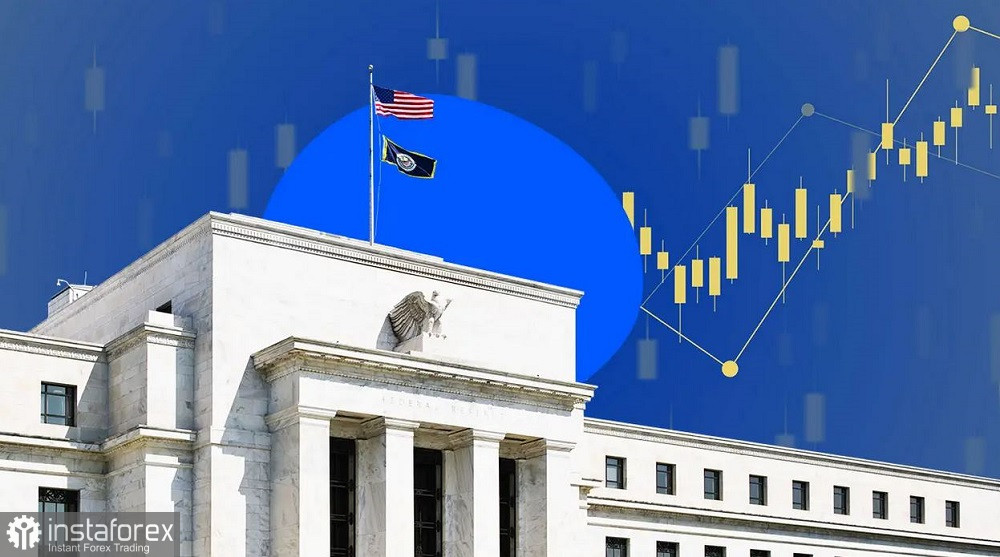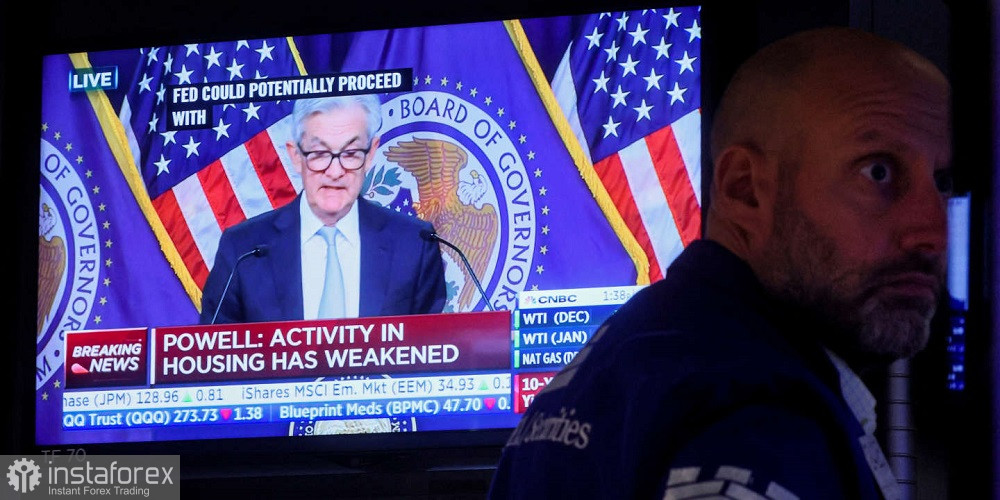The EUR/USD closed the trading week at 1.0326. After sharply rising to the limit of the 5th figure, the systematic downward rollback followed. It is likely that if it were not for the weekend the final point of the downward momentum would have been within the second figure. Actually, the main intrigue of the forthcoming week consists of whether EUR/USD bulls will be able to seize the initiative or the price will continue to slide to the parity level. In my subjective opinion, the downward scenario looks more promising, however the decisive role here will be played by the Federal Reserve. The Fed will set the agenda in the near future: all other macroeconomic factors will play a secondary role.

Let me remind you that the upward momentum of EUR/USD was caused by only one "main" fundamental factor: traders reacted to the slowdown of monetary policy tightening. After the relevant hints at the November Fed meeting, and after the release of the latest U.S. inflation report, it became clear that the Fed would "moderate its fervor" as early as the December meeting. The first (obvious) signs of slowdown in inflation growth in America allowed us to confidently assume that the central bank will raise the rate by 50 points at the final meeting of 2022, thus breaking the series of 75-point hikes. Several Fed officials (notably Parker, George) actually confirmed the assumptions, thereby plunging the greenback. The dollar index renewed its three-month low on Tuesday, falling into the 105-point area for the first time since August.
Ironically, thanks to the Fed, the US currency began to recover at the end of last week.
It's all about emphasis! After the inflation release, the Fed de facto confirmed and announced a slowdown in the pace of rate hikes. A little later the emphasis shifted: members of the central bank (Bullard, Waller, Cook, Daley, Collins) said that inflation in America is still too high and, therefore, the central bank still has "a lot of work". Bullard and Daly set the upper limit of the current cycle at 5.25%, and Waller urged market participants not to exaggerate the significance of the fact that the rate hike is slowing down.
In other words, the Fed members shifted the focus of the market's attention to several points: 1) the Fed is not going to reverse its hawkish course; 2) it is too early to talk about a sustained trend of slowing inflation (you can't judge the outlook from one report); 3) what matters is not the speed of rate hikes, but the ultimate stop to the current cycle; and 4) high rates will be needed even as inflation growth slows.
By the way, the last thesis was voiced by Fed Chairman Jerome Powell at the November meeting, that is, even before the release of the resonant inflation report. He announced the probable need for further rate hikes "even if the rate of inflation starts to slow down". In the light of the recent events this message can be decisive for EUR/USD traders. If the rest of Powell's colleagues catch up with him, the pair will inevitably return to the parity level, it will be just a matter of time.

In this context, the minutes of the November FOMC meeting, which will be published on Wednesday, November 23, will play a particularly important role. All the talking points of this document will be viewed through the prism of the latest CPI growth report. The hawkish sentiment of most Committee members, signals that the final interest rate level will be higher (than previously expected) and a willingness to keep rates high even as inflation slows - all these messages will greatly strengthen the dollar's position.
Also next week some Fed officials are due to speak. In particular, we will get the views of Loretta Mester, Esther George, and James Bullard. Earlier they voiced hawkish signals, and probably next week they will repeat their position in one form or another, thus supporting the US currency.
In terms of macroeconomic data, there are a few releases, but all of them will play a secondary (not decisive) role. On Monday we have the German producer price index (a big monthly and year-on-year slowdown is expected); on Tuesday we have the eurozone consumer confidence index and the Federal Reserve Richmond manufacturing index; on Wednesday we will receive the European PMI, the index of business activity in the manufacturing sector in the US, the volume of home sales in the US primary market; on Thursday we have the German IFO index and the European Central Bank minutes; and on Friday there's the German Q3 GDP growth (final report).
However all these reports will have a short-term effect on EUR/USD. The FOMC minutes as well as comments of the Fed members may significantly strengthen or weaken the greenback. Given the previous rhetoric of the Fed representatives, the dollar still has a chance to return to the "major league", i.e. to the level of parity with the euro. Selling the euro still looks more attractive, while long positions are still risky. The upward momentum has faded - the bulls could not break the downward trend. Obviously, the massive upward surge to 1.0480 was corrective in nature, after falling to 0.9730 in early November. The correction seems to be over - if the Fed continues to declare a hawkish rate, the pair will return to 1.0000.





















